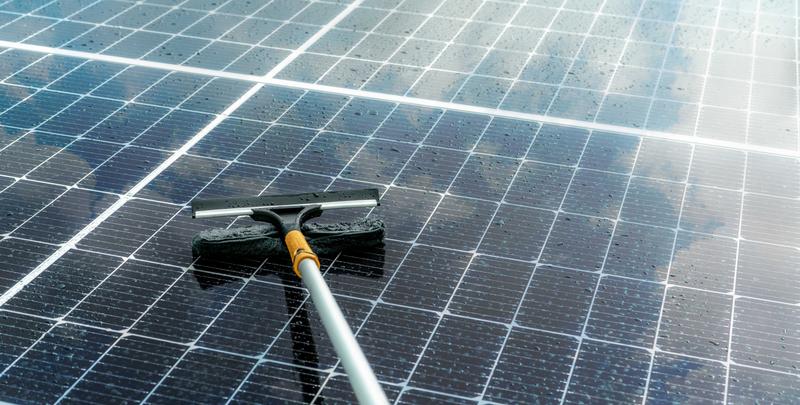
Should you’re searching for a superior-efficiency
Why Photo voltaic Panel Cleaning Matters
Photo voltaic panels capture Power at their best when clean up. Dust, pollen, hen droppings, and smog lessen effectiveness—occasionally by twenty% or even more. Normal cleaning can help sustain best functionality, lengthen panel life, and shield your financial commitment.
Most important Added benefits:
- Enhanced Electrical power output
- Decrease electric power expenses
- Prolonged panel lifespan
- Lessened hazard of micro‑cracks resulting from thermal hotspots
Sorts of Photo voltaic Cleansing Instruments
Picking out the appropriate Software relies on your setup, water availability, and wished-for usefulness. Types include things like:
- H2o‑powered photo voltaic brush systems
- Portable solar panel cleansing kit bundles
- Pure drinking water cleansing techniques
- Rotary photo voltaic brushes and extension poles
Water Run Photo voltaic Brush Methods
These brushes connect with a drinking water source and spin although dispensing drinking water, combining cleansing and lubrication in a single move. The result: spotless panels without having scratching.
Critical Features:
- Integrated water feed with the brush head
- Comfortable bristles Safe and sound for glass surfaces
- Rotary movement cuts down handbook effort
- Mounts on extension poles for rooftop access
Transportable Solar Panel Cleaning Kit
A complete
- Brush head (fixed or rotating)
- Extension pole (adjustable lengths as much as 6 m)
- Hose adapters or quick‑connect fittings
- Pure‑h2o tank or filtration procedure
- Tender microfiber towels or squeegees
- Non‑abrasive cleansing Alternative (if authorized)
Advantages of All-in-One particular Kits:
- Start off cleaning with minimal set up
- Compact for storage or journey
- Compatible with household or professional solar arrays
Pure Water Photo voltaic Cleaning Methods
These systems purify area drinking water—getting rid of minerals and dirt—so it received’t depart scale or streaks. Pure h2o empowers Qualified-grade results without the need of chemical compounds.
How It Works:
- Pretreatment filtration (sediment, carbon, ion Trade)
- Last deionization or reverse‑osmosis phase
- Filtered drinking water circulated through brush for cleansing
- Residue‑free of charge drying—no places or streaks left at the rear of
Rotary Solar Brush & Extension Poles
For giant solar arrays or business use, a power-rotating head over a telescoping extension pole tends to make cleansing effective and Harmless.
Positive aspects:
- Less Bodily effort, faster coverage
- Access roofs and ground‑mounted panels simply
- Adjustable shaft lengths for different angles
- Universal rapid‑join strategies for components
Concentrate on Basic safety & Most effective Methods
Cleaning photo voltaic panels will involve heights and slippery surfaces—safety 1st:
- Use non‑conductive extension poles
- Stay clear of pressure washers that will crack glass
- Get the job done early or late to avoid glare and heat
- Dress in grips and slip-resistant footwear
- Observe community h2o‑use procedures or restrictions
Step‑by‑Stage Cleaning Regimen
- Convert from the photo voltaic inverter or assure procedure is deactivated
- Rinse panels with small‑pressure water
- Utilize a brush (or photo voltaic brush package) with drinking water feed
- Scrub gently in overlapping, linear passes
- Rinse extensively with clear drinking water
- Dry with microfiber squeegee or delicate towel—only if required
Choosing the Right Photo voltaic Panel Cleansing Device
Look at your setup as well as your water obtain:
solar panel cleaning
Routine maintenance & Care Recommendations
- Flush hose and brush right after each use
- Keep dry, clean, and from UV publicity
- Replace worn brush heads—and Examine bristle softness
- Inspect seals and connectors for leaks
- Switch or thoroughly clean filters in pure‑drinking water units routinely
Eco-Pleasant Cleaning Added benefits
Correct cleaning prolongs solar panel effectiveness and lessens energy waste. Employing drinking water by itself—without soaps or chemical substances—aids protect community ecology and avoids runoff air pollution.
How Photo voltaic Panel Cleansing Impacts ROI
Good maintenance utilizing top quality brushes and kits keeps technique effectiveness topped up, minimizing the payback period of time and maximizing Electricity generate eventually.
Price tag Considerations & Value
- H2o‑driven solar brushes are Expense-successful and durable
- Pure water systems involve upfront investment but offer consistent, location‑absolutely free cleaning
- Rotary brush kits Increase productivity—worthwhile for big installations
- DIY kits help you save labor expenditures; Specialist companies Price more but unlock your time and efforts
Typical Uses of Photo voltaic Panel Brushes
- Residential rooftops
- Business solar farms
- RV or cell installations
- Solar carports
- BIPV segments (setting up‑integrated photovoltaics)
Customer Recommendations & Use Instances
“This photo voltaic panel cleaning brush designed a obvious change inside of minutes—dust long gone, no streaks, and our output improved!”
“Upgrading to your water‑driven photo voltaic brush saved hours of scrubbing. Combined with a pure h2o method, the panels seemed brand new.”
FAQs About Solar Panel Cleansing
How frequently must panels be cleaned?
Each individual 6 to 12 months, based upon your climate—far more often in dusty or pollen-large areas.
Can rain clean up solar panels?
Rain aids but doesn’t do away with dirt buildup or film layers—manual cleaning yields greater performance.
Can I use tap water?
Tap water could depart mineral residue. A
Can cleaning injury panels?
Only if abrasive resources or substantial-force washers are applied. Normally use soft bristles, low-pressure, and adhere to manufacturer recommendations.
Pro Strategies for Solar Panel Entrepreneurs
- Clean up early early morning or evening in order to avoid thermal anxiety
- Check output info—if efficiency drops, thoroughly clean panels
- Maintain panels angled—standing h2o encourages algae development if left much too very long
- Rotate brush heads periodically to keep up even dress in
Summary: A Brush For each Want
Regardless of whether you’re searching for a price-powerful
Take a look at the full line of brushes and equipment built specifically for solar cleaning at